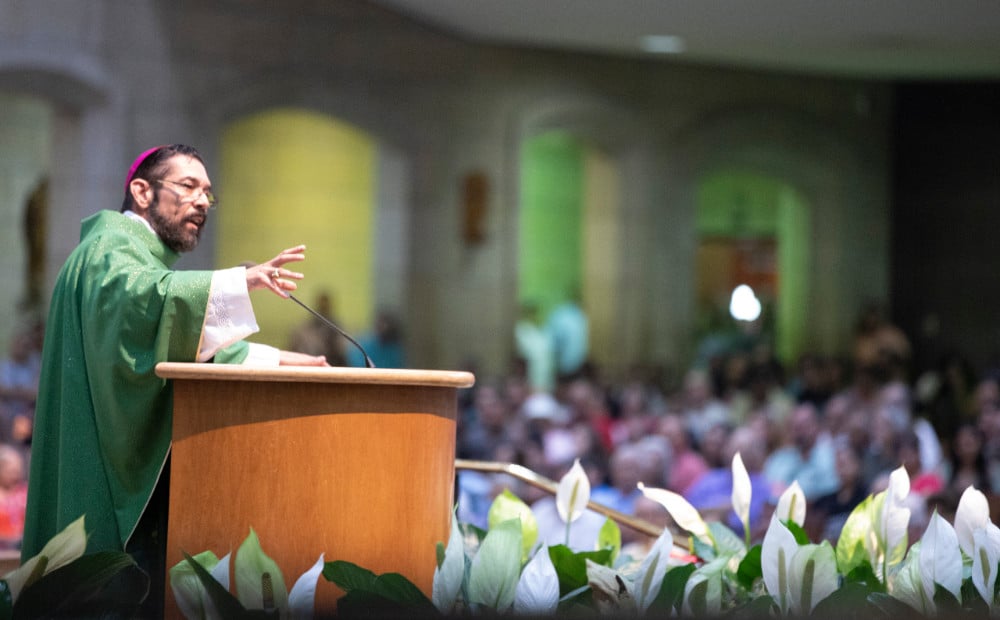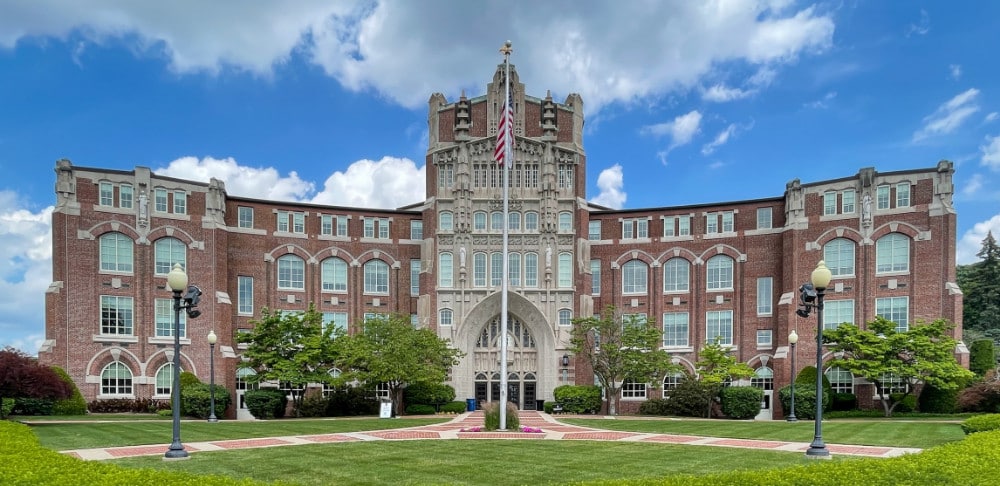 As I sit here in the dark of the chapel at OSV, the light of the sanctuary lamp grows brighter with each passing moment. I know the scientific explanation for the phenomenon I am observing: After I turned out all the artificial lights, my pupils dilated to allow more light in. The lamp, the sole remaining light source, naturally appears brighter and brighter as my eyes adjust to the dark.
As I sit here in the dark of the chapel at OSV, the light of the sanctuary lamp grows brighter with each passing moment. I know the scientific explanation for the phenomenon I am observing: After I turned out all the artificial lights, my pupils dilated to allow more light in. The lamp, the sole remaining light source, naturally appears brighter and brighter as my eyes adjust to the dark.
And yet: What I am experiencing is a light reaching from the left side of the sanctuary toward the center, progressively illuminating the crucifix, the visible sign of Christ’s sacrifice, and below it the tabernacle, which contains both another sign and the reality it signifies. Obscured from my sight when I first turned out the light, both now dominate my vision, and the lamp that lights them melts away. Were the candle not flickering as the air in the sanctuary stirs, I might even forget that it is here.
The sanctuary lamp is a sign of the sacrifice before me. The purpose of a sign is to draw the thoughts of the one who sees it to the reality that it signifies. Feeling my eyes drawn to the tabernacle, feeling my soul respond to the Real Presence of Christ within, I know that the candle is doing its job well.
As Catholics, every one of us is a sign of that same Real Presence — or, at least, we should be. “You are the light of the world” that shines in the darkness to draw the thoughts and imagination of our fellow humans to the source of that light, Christ himself.
I wrote in my last column about the struggles that many of us face over time as we try to sustain in our will and our imagination the experience of Christ truly present in the Blessed Sacrament. The late Catholic novelist Walker Percy was also a philosopher whose main interest was in semiotics, the theory of signs. He wrote, not only in his philosophical essays but in novels such as “Love in the Ruins” and “The Thanatos Syndrome,” about the condition of modern man, whose thoughts have become unmoored from reality and for whom, therefore, certain signs no longer signify. They become, in the words of Owen Barfield, the philosopher friend of C.S. Lewis and J.R.R. Tolkien, “idols,” because they no longer have any significance beyond the thing itself. When we see the sanctuary lamp as only a candle and do not perceive it as a sign, when we see the light reaching out from the candle toward the tabernacle as only a natural process and do not perceive in it the sign progressively illuminating that which it signifies, we find ourselves deeply immersed in the particular idolatry of the modern age.
Or rather, we do not find ourselves, because, as I wrote earlier, we too are meant to be signs, and in our idolatry, we cannot see that. If we cannot perceive the sanctuary lamp as a sign of the Real Presence the flame is meant to signify, even though intellectually we know that this is the sole purpose for which the candle was not only lit but even created, how likely are we to see ourselves as signs and to understand why we were created, to take the words of Christ to heart, to spend our days shining in the darkness, casting a light on the continued presence of Christ in this world?
Is it any wonder that, when modern man lost his sense of the Real Presence of Christ, he lost his sense of himself, too? So much of modern literature, modern philosophy, the entire industry of self-care and self-help is founded on our desire to recover our sense of self. What if the way to recover a true sense of self, however, is not to make ourselves into idols but to recognize that we, too, were created to be signs of the mystery we perceive and receive in the light of the sanctuary lamp?
Scott P. Richert is publisher for OSV.







